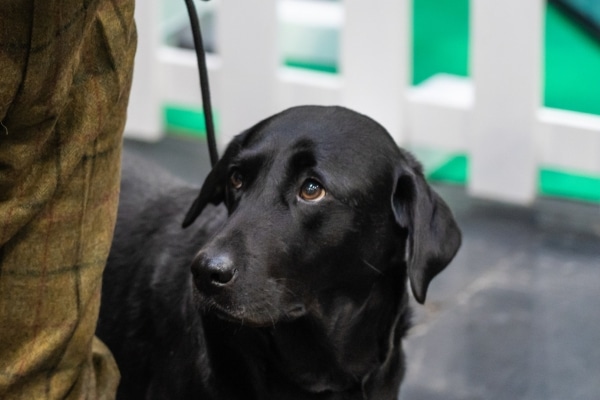
Crufts 2024: meet the judges
Judging in BASC’s gamekeeper rings at Crufts is a dream for many who have dedicated years to breeding and training working gundogs.
Get information on the legal shooting season for mammals and birds in the UK.
Learn about our current conservation projects and how you can get involved.
Comprehensive information and advice from our specialist firearms team.
Everything you need to know about shotgun, rifle and airgun ammunition.
Find our up-to-date information, advice and links to government resources.
Everything you need to know on firearms law and licensing.
All the latest news and advice on general licences and how they affect you.
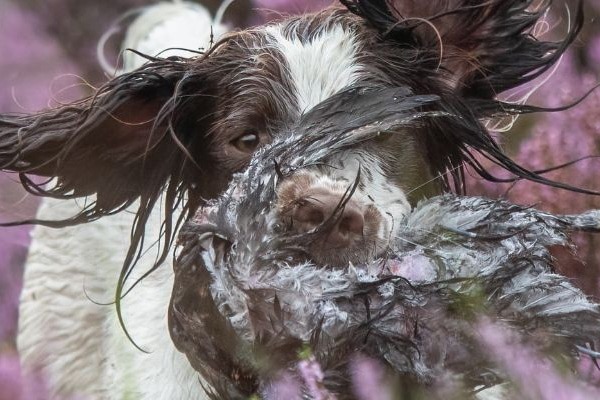

Here at BASC our staff members own – or have owned – a veritable smorgasbord of gundog breeds. We asked a handful of colleagues about their working companions’ quirks and characters…
My first Labrador, Kai, was a present to myself for my 16th birthday. I was looking for a loyal dog, who could truly be my own after only having family dogs before. I had no real intention to work him, until a good friend looked at his breeding and said, “that dog needs to work”.
It all then came together from there. The ‘loyal’ qualities I was looking for have been proven many times over during the years of owning him.

The quirks and qualities intertwine quite well in Labradors and I’ve noticed, since owning two at a time, that where one has a ‘quirk’, the other makes up in that area well. Blue, my younger Lab, has always had what I call a ‘spaniel brain’. He is hotter and less logical than Kai and has been known to jump off of a 12ft wall to gain access to a small stream of water.
But when working them together on a shoot day, they balance each other extremely well and you pick the right dog for each job. If it’s a 100-yard water retrieve, Blue is chosen; but if it’s hunting a thick hedgeline on a steep bank where a slower, steadier dog is needed, Kai gets the nod.
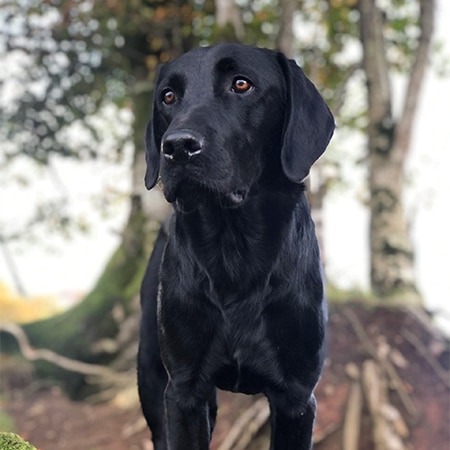
On a very cold and frosty Saturday earlier this year, Blue and I were on a walked-up beaters’ day. We finished the day with a duck flight over one of the large ponds on the estate. A duck was shot on the other side that neither I nor Blue saw come down.
A call came through on the radio – it was a long retrieve and the other dogs had been unable to get it. Blue was sent back on a blind retrieve about 120 yards out. After working his socks off all day doing a bit of beating and picking up, he swam out, picked the duck and came back to a lot of praise from all who had watched him. This was later followed by a large dinner with a cuddle on the sofa!
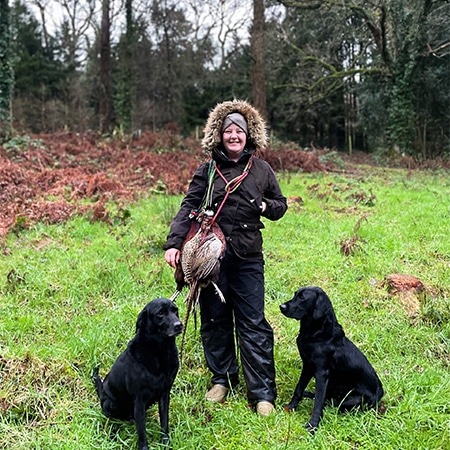
I wanted the ultimate gundog breed, I’d met a few Chessies and had been mightily impressed.
They are strong, muscular, courageous and powerful dogs – their barrel chests are used to break the ice when retrieving in cold weather. Chessies are committed hunters, intelligent, and intensely loyal to their owner, with high guarding and protective instincts.
They have a double, oily, wavy coat that makes them waterproof and webbed feet for swimming. Although they can be mistaken for Labradors, they’re very different from the latter. As one ’fowler said: “A Lab will retrieve a can of beer from the fridge, but a Chessie can retrieve it, drink it and crush the can on his head.”
Ideal as a family-friendly gundog, they require lots of social stimulus and exercise. You must be as committed to your Chessie as they are to you – but on the coldest shore, in the harshest conditions, a Chessie is willing to hunt and retrieve again and again.
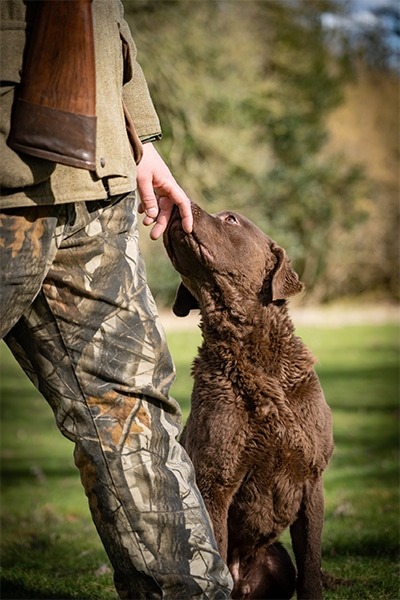
I had a Chessie dog called Buck. He was a great companion and would join me when wildfowling, inland duck shooting, and game shooting (when allowed by the keeper).
Buck hunted with you rather than for you. Walking up a gutter on a marsh one morning, a teal flushed. I killed it with my first barrel and Buck went for it. A second teal flushed and I pricked it with my second. In mid-retrieve, Buck changed to the wounded bird and retrieved that first, before going back for the first bird. He would always decide his own order and timing for retrieving birds – my failure as a dog trainer – but they would all be retrieved. If I got cross with him because of this, he’d give me a look as if to say, “From now on you can retrieve your own ducks”.
Never a good peg dog – my failure again – on his first peg he insisted on retrieving every bird shot. I ended up with a pile of pheasants, a dog with a mouthful of feathers and a lot of offended spaniels and Labradors.
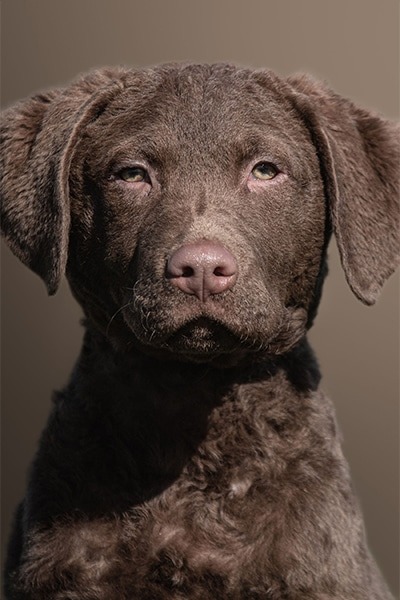
I first saw the WHV at a game fair. The rough coat, ginger colour and the beard and bushy eyebrows caught my eye and my need for long-ranging dogs for upland picking up duties made the breed choice easy. They’re tremendous characters with personalities to match.
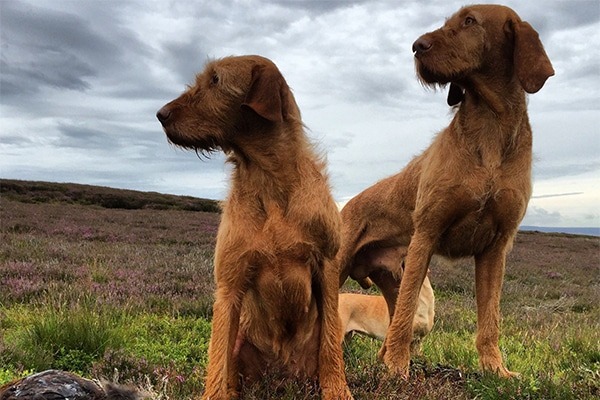
I’ve owned and trained five wirehaired vizslas – Sika, Bolly, Clicquot, Scooby and Margo – and all of them have been superb all-rounders whether walked-up shooting, picking up or on stalking duties. They are very slow to mature; whereas a spaniel or Labrador can be operational at just over a year, the vizsla takes a bit more time. Sika refused to retrieve a tennis ball or dummy her whole life (just too posh!), but we were grouse beating one day and as we approached the Guns she started picking up grouse – a great relief!
This gundog breed hooks you in. They can be clingy and if not stimulated or exercised enough can dismantle a kitchen faster than a strong bloke with a chainsaw, but they do things that you can’t train into a ‘normal’ gundog. Every one of mine would occasionally do something so instinctive it would blow my mind. Alas, I’m now down to just four gundogs and ‘viszlaless’, for the moment…
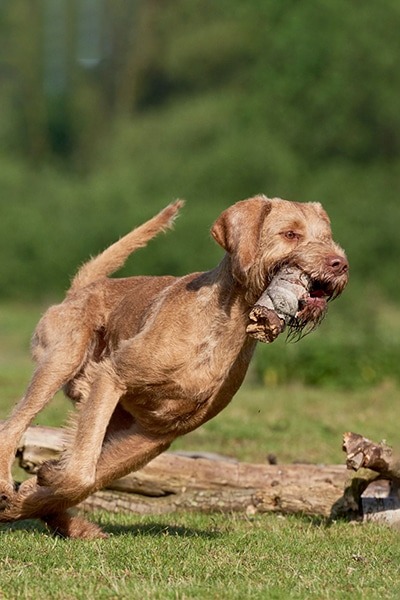
My first bitch was called Sika. She was a dog of a lifetime – biddable, sensitive and immensely intelligent, she could go ‘sub-aqua’ on ducks, and point on air scent on game and deer. We once convinced a stalking client that, when she pointed, left leg up meant stag and right leg up meant hind!
One of my fondest recollections is of picking up at Bleasdale. I had about a dozen dogs out with me and they were sweeping down a large valley, hoovering up partridges; half the pack were on one side and the other half were on the opposite bank. The spaniels would stay relatively close but the vizslas could range over the top onto the moor on each side, collecting long-range runners. That was a great day.
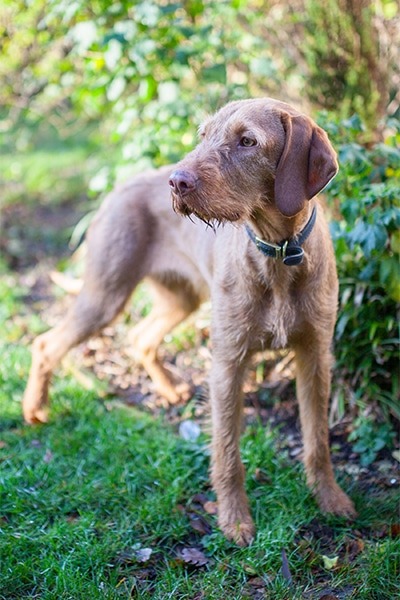
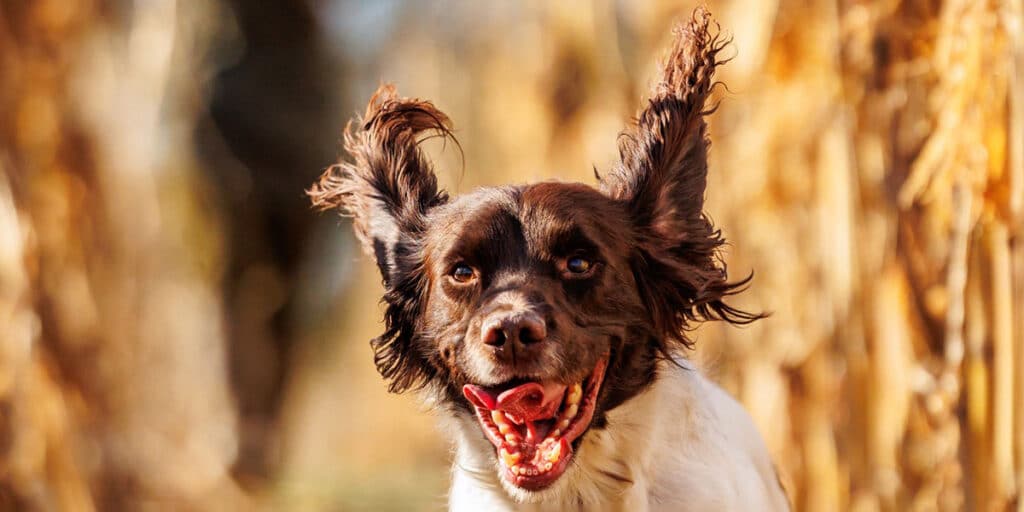
I needed an all-rounder that was able to find and flush game, retrieve, and love water.
The English springer spaniel for me is a versatile natural hunting dog which hunts through cover with style and pace, always wanting to please its handler. In my eyes, the springer ticks all the boxes.
Large munsterlanders have a thirst to work and an endless amount of energy to do so! We have always said daily exercise is required to exercise their mind as you will never exhaust their bodies. They give you everything in the field and can cover an awful lot of ground on a day’s shooting, doing each of the functions of a HPR – hunting, pointing and retrieving.
They never cease to amaze me with their keenness to finish the day on a flight pond, and they make amazing family dogs; both of our children have strong bonds with our dogs.
Ilka was our first large munsterlander and taught us just what a multitool the breed can be. Georgie was to be a multitool like Ilka, but she quickly showed huge potential to be a specialist deer tracking dog for UKDTR, passing her puppy test at six months and then her test to go on the UKDTR tracking register at just a year old.
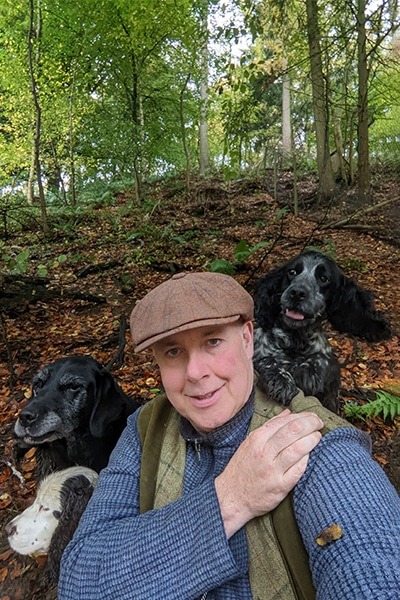
Mo is memorable in that I can recall picking a woodcock at long distance with her at a trial which she went on to win, but then I can also remember her running in on one at another trial at the very final stages. Dogs are great levellers. One time, as a keeper helping out at a retriever trial, we were travelling between ground and at the time Mo was with me.
She looked around the cart and picked the sternest looking judge – with a reputation to boot – and insisted on jumping on their lap. I am certain they were both smiling for the whole journey!
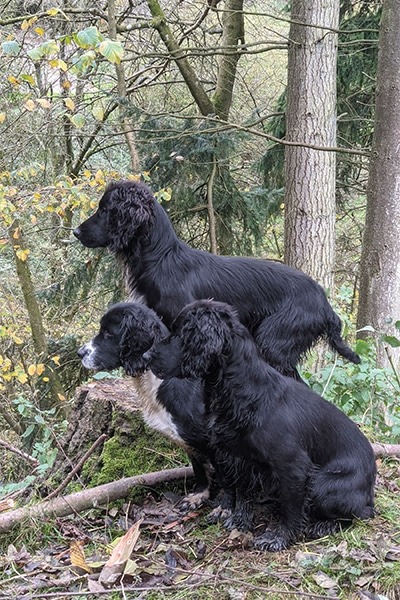
Before my husband and I had met, we had both been attracted to this gundog breed purely by its looks. After we met, we had the chance to shoot over them and that was the start of our love affair with the breed. The elegance in the way they worked the ground and the loyalty they showed to the handler were so attractive.
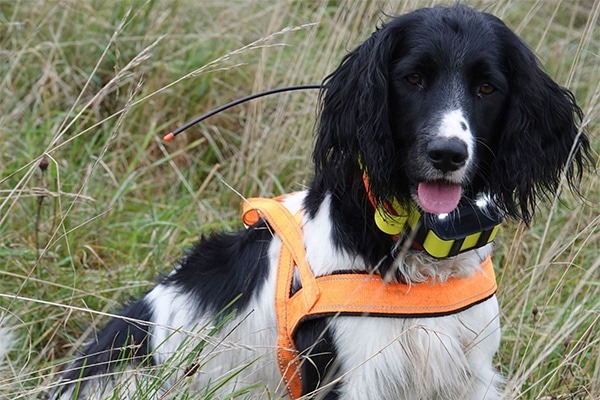
Large munsterlanders have a thirst to work and an endless amount of energy to do so! We have always said daily exercise is required to exercise their mind as you will never exhaust their bodies. They give you everything in the field and can cover an awful lot of ground on a day’s shooting, doing each of the functions of a HPR – hunting, pointing and retrieving.
They never cease to amaze me with their keenness to finish the day on a flight pond, and they make amazing family dogs; both of our children have strong bonds with our dogs.
Ilka was our first large munsterlander and taught us just what a multitool the breed can be. Georgie was to be a multitool like Ilka, but she quickly showed huge potential to be a specialist deer tracking dog for UKDTR, passing her puppy test at six months and then her test to go on the UKDTR tracking register at just a year old.
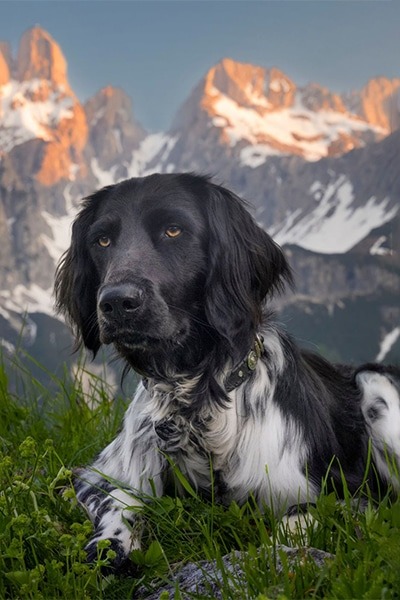
Large munsterlanders have a thirst to work and an endless amount of energy to do so! We have always said daily exercise is required to exercise their mind as you will never exhaust their bodies. They give you everything in the field and can cover an awful lot of ground on a day’s shooting, doing each of the functions of a HPR – hunting, pointing and retrieving.
They never cease to amaze me with their keenness to finish the day on a flight pond, and they make amazing family dogs; both of our children have strong bonds with our dogs.
Ilka was our first large munsterlander and taught us just what a multitool the breed can be. Georgie was to be a multitool like Ilka, but she quickly showed huge potential to be a specialist deer tracking dog for UKDTR, passing her puppy test at six months and then her test to go on the UKDTR tracking register at just a year old.
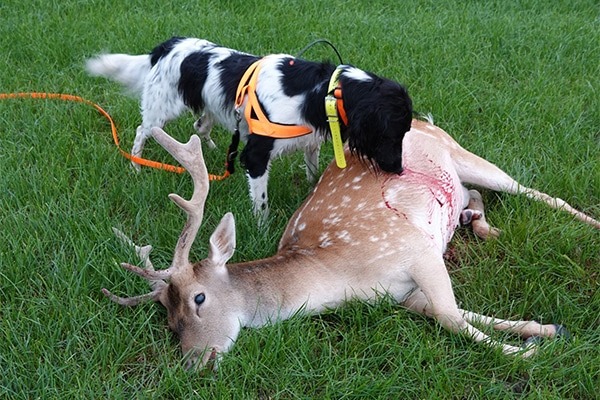
I needed an all-rounder that was able to find and flush game, retrieve, and love water.
The English springer spaniel for me is a versatile natural hunting dog which hunts through cover with style and pace, always wanting to please its handler. In my eyes, the springer ticks all the boxes.
Springers are extroverts, loveable, and full of character, craving as much attention as you’re willing to give, which in my experience will never be enough for them.
They are sociable and loyal and have an eagerness to please that helps them fit into any family. This breed is intelligent, too, and has a boundless amount of energy which makes it ideal for the shooting field.
In my experience, springers can try to take control if allowed, so training needs to be fun but also comprehensive, ensuring the dog works as one with its handler. I’m sure we have all witnessed on a shoot day when this is not the case and chaos ensues!
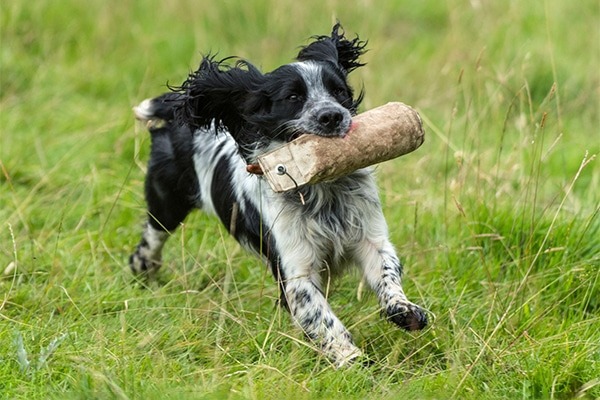
I once owned a springer bitch called Bramble. She was two years old when she came to me but from day one, we bonded. I am sure we all have a dog that stands out from the rest and holds a special place in our hearts – Bramble is mine! And for so many reasons.
One memory will stay with me forever. I was working on an estate in Aberdeenshire, and we had a small party out on a walked-up grouse day. The Guns were walking into a strong breeze when a covey of grouse lifted in front but out of shot. Six of the birds turned back on the wind and flew straight over us. Two were shot, one of which fell into a steep gully with long heather and bracken.
Bramble had watched the bird down so I sent her back while all the Guns, including my headkeeper, reiterated the same words: “that will never be picked!” The cover was so high I was unable to see Bramble, only catching a glance of white every now and then as she worked through the dense vegetation. I was at the point of calling her back when suddenly she burst from cover carrying the bird everyone had written off. My forever champion!
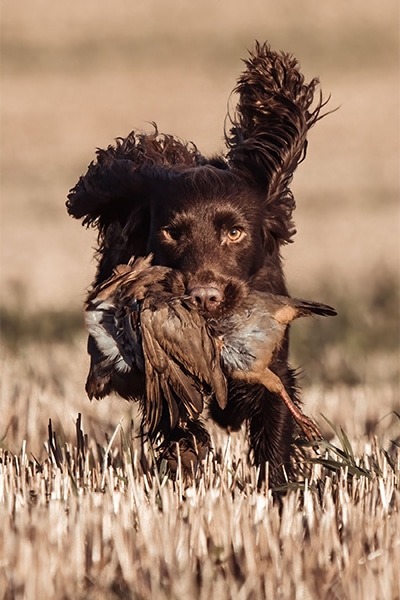

Judging in BASC’s gamekeeper rings at Crufts is a dream for many who have dedicated years to breeding and training working gundogs.
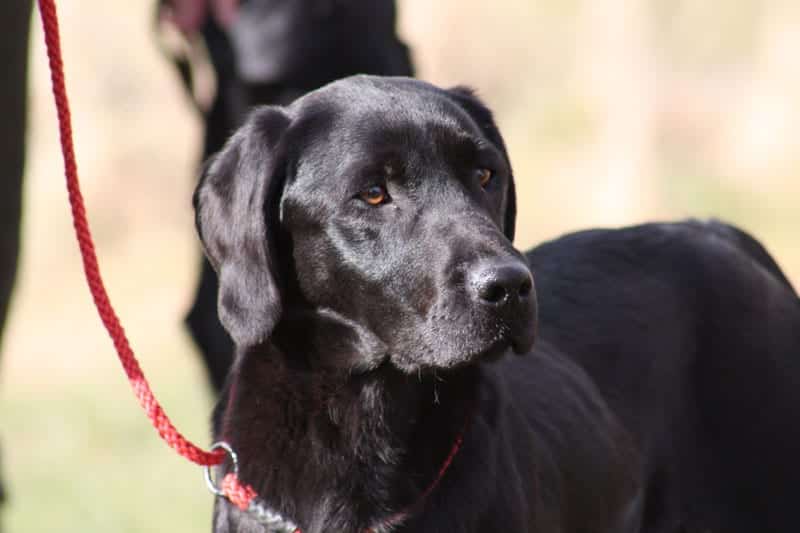
Post-Brexit rules on pet travel in and out of Northern Ireland set to be costly.
Andrew Profit, a keen stalker and outdoor enthusiast, talks about living with Lyme disease.
Sign up to our weekly newsletter and get all the latest updates straight to your inbox.
© 2023 British Association for Shooting and Conservation. Registered Office: Marford Mill, Rossett, Wrexham, LL12 0HL – Registered Society No: 28488R. BASC is a trading name of the British Association for Shooting and Conservation Limited which is authorised and regulated by the Financial Conduct Authority (FCA) under firm reference number 311937.
If you have any questions or complaints about your BASC membership insurance cover, please email us. More information about resolving complaints can be found on the FCA website or on the EU ODR platform.
This website uses cookies so that we can provide you with the best user experience possible. Cookie information is stored in your browser and performs functions such as recognising you when you return to our website and helping our team to understand which sections of the website you find most interesting and useful.
Strictly Necessary Cookie should be enabled at all times so that we can save your preferences for cookie settings.
If you disable this cookie, we will not be able to save your preferences. This means that every time you visit this website you will need to enable or disable cookies again.
This website uses Google Analytics to collect anonymous information such as the number of visitors to the site, and the most popular pages.
Keeping this cookie enabled helps us to improve our website.
Please enable Strictly Necessary Cookies first so that we can save your preferences!
More information about our Cookie Policy